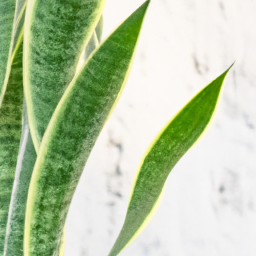
Have you ever noticed how being surrounded by greenery can instantly uplift your mood and make you feel more at ease? It turns out that there is a scientific explanation for this phenomenon. In this blog post, we will explore the fascinating connection between greenery and well-being, focusing on the benefits of wellness plants. These plants have been proven to have a positive impact on our physical and mental health, making them a must-have addition to any living or workspace. So, let’s delve into the world of wellness plants and discover how they can enhance our overall well-being.
The Impact of Indoor Plants on Mental Well-being
Introduction
Indoor plants have long been admired for their aesthetic appeal, but did you know that they can also have a profound impact on our mental well-being? Research has shown that incorporating greenery into our indoor spaces can improve our mood, reduce stress levels, and enhance our overall sense of well-being. In this article, we will explore the connection between indoor plants and mental well-being, and provide you with a step-by-step guide on how to create a wellness oasis in your own home.
The Science Behind the Connection
The positive effects of indoor plants on mental well-being can be attributed to a number of scientific factors. Firstly, plants release oxygen and absorb carbon dioxide, which helps to improve the air quality in our indoor spaces. This increase in oxygen levels can have a direct impact on our brain function, improving our cognitive abilities and enhancing our overall mood.
Secondly, the presence of plants in our environment can help to reduce stress levels. Studies have shown that simply being in the presence of nature, even if it is indoors, can have a calming effect on our nervous system. The sight of greenery and the natural patterns found in plants can help to relax our minds and reduce feelings of anxiety and tension.
Furthermore, indoor plants can also act as natural humidifiers, increasing the humidity levels in our indoor spaces. This can be particularly beneficial for those who suffer from respiratory conditions or dry skin, as it helps to alleviate symptoms and improve overall comfort.
Creating Your Wellness Oasis
Now that we understand the science behind the connection between indoor plants and mental well-being, let’s dive into creating your very own wellness oasis at home. Follow these simple steps to transform your indoor space into a calming sanctuary:
1. Assess Your Space: Start by evaluating the available space in your home. Consider the lighting conditions, temperature, and humidity levels in the area where you plan to place your plants. Different plants have different requirements, so it’s important to choose ones that will thrive in your specific environment.
2. Choose the Right Plants: Select plants that are known for their air-purifying properties and low maintenance needs. Some popular options include snake plants, pothos, peace lilies, and spider plants. These plants not only improve air quality but are also easy to care for, making them perfect for beginners.
3. Arrange for Optimal Placement: Once you have chosen your plants, arrange them strategically in your space. Consider creating clusters of plants to create a lush and visually appealing display. Place larger plants in corners or near windows to maximize their impact, and smaller plants on shelves or tables to add depth to your oasis.
4. Care and Maintenance: Regularly care for your plants by watering them, providing adequate sunlight, and ensuring proper drainage. Each plant has different care requirements, so be sure to research and follow the specific guidelines for each plant. This will help to ensure their longevity and continued well-being.
5. Enhance the Ambiance: To further enhance the calming ambiance of your wellness oasis, consider incorporating natural elements such as stones, shells, or driftwood. These natural elements can add texture and visual interest to your indoor space, further promoting a sense of tranquility and well-being.
6. Enjoy the Benefits: Once your wellness oasis is complete, take the time to fully immerse yourself in its beauty and reap the benefits of improved mental well-being. Spend time in your oasis reading, practicing mindfulness, or simply enjoying the peacefulness that comes from being surrounded by nature.
In conclusion, the impact of indoor plants on mental well-being is undeniable. By incorporating greenery into our indoor spaces, we can improve air quality, reduce stress levels, and create a calming sanctuary that promotes overall well-being. Follow these steps to create your own wellness oasis and experience the transformative power of plants in your daily life.

Creating a Tranquil Home Environment with Wellness Plants
Welcome to the world of wellness plants, where greenery meets well-being. In this guide, we will explore how incorporating wellness plants into your home environment can enhance tranquility and promote a sense of peace and harmony. Whether you are a seasoned plant enthusiast or just starting your journey, these simple steps will help you create a serene oasis right in your own home.
Step 1: Choose the Right Plants
The first step in creating a tranquil home environment is selecting the right wellness plants. Not all plants are created equal when it comes to promoting well-being. Look for plants that have calming properties, such as lavender, jasmine, or aloe vera. These plants are known for their soothing scents and ability to reduce stress and anxiety.
Additionally, consider plants that have air-purifying qualities. Spider plants, peace lilies, and snake plants are excellent choices as they can help remove toxins from the air, creating a cleaner and healthier living space. Remember to consider the lighting conditions in your home and choose plants that thrive in those environments.
Once you have chosen your wellness plants, it’s time to find the perfect spots for them in your home.
Step 2: Find the Ideal Locations
The placement of your wellness plants is crucial in creating a tranquil home environment. Identify areas in your home where you spend the most time and could benefit from a touch of greenery. Consider placing plants in your bedroom, living room, or home office to bring a sense of calmness to these spaces.
When positioning your plants, take into account their specific needs. Some plants thrive in bright, indirect light, while others prefer low-light conditions. Place your plants accordingly to ensure they receive the right amount of sunlight. Additionally, consider grouping plants together to create a mini indoor garden, which can have a more significant impact on the overall ambiance of your home.
Remember to regularly rotate your plants to ensure even growth and prevent them from leaning towards the light source. This will help maintain a balanced and visually appealing arrangement.
Step 3: Care for Your Wellness Plants
Now that you have chosen the right plants and found the perfect locations for them, it’s time to care for your wellness plants. Proper plant care is essential for their well-being and longevity.
Start by understanding the watering needs of each plant. Overwatering or underwatering can lead to stress and damage. Research the specific watering requirements of your chosen plants and develop a watering schedule that suits their needs. Ensure that your plants are potted in well-draining soil and that excess water can escape through drainage holes.
Regularly dust the leaves of your plants to keep them clean and free from debris. This not only enhances their appearance but also allows them to absorb light more efficiently. You can use a damp cloth or gently mist the leaves with water to remove any dust or dirt.
Lastly, fertilize your plants regularly to provide them with the necessary nutrients for healthy growth. Use a balanced fertilizer or opt for organic alternatives to avoid chemical buildup in the soil.
By following these care tips, your wellness plants will thrive, contributing to a tranquil home environment.
In conclusion, creating a tranquil home environment with wellness plants is a simple and effective way to enhance your well-being. By carefully selecting the right plants, finding ideal locations, and providing proper care, you can transform your living space into a serene oasis. So, why wait? Start incorporating wellness plants into your home today and experience the connection between greenery and well-being firsthand.

Incorporating Greenery in Office Spaces for Employee Well-being
Creating a healthy and vibrant work environment is crucial for the overall well-being and productivity of employees. One effective way to achieve this is by incorporating greenery into office spaces. Research has shown that plants not only enhance the aesthetic appeal of the workplace but also have numerous benefits for employee well-being. In this article, we will explore the connection between greenery and well-being and provide a step-by-step guide on how to incorporate plants in office spaces.
Why Greenery Matters
Greenery in office spaces has been proven to have a positive impact on employees’ physical and mental health. Plants help purify the air by removing toxins and releasing oxygen, creating a healthier and cleaner environment. Improved air quality can reduce the risk of respiratory problems, allergies, and other health issues, leading to fewer sick days and increased productivity.
Moreover, studies have shown that the presence of plants can reduce stress levels and improve overall well-being. The calming effect of nature has been linked to lower blood pressure, decreased heart rate, and increased feelings of relaxation. Greenery also enhances mood and concentration, leading to improved job satisfaction and performance.
Additionally, plants contribute to noise reduction in office spaces. Their leaves and branches can absorb and diffract sound waves, reducing background noise and creating a more peaceful and productive work environment. This can help employees focus better and minimize distractions, ultimately boosting their efficiency and job satisfaction.
Step-by-Step Guide to Incorporating Greenery
1. Assess your office space: Start by evaluating the available space in your office. Consider factors such as natural light, temperature, and humidity levels. Different plants have varying light and temperature requirements, so it’s important to choose plants that will thrive in your specific environment.
2. Choose the right plants: Select plants that are low-maintenance and suitable for indoor environments. Some popular office plants include pothos, snake plant, peace lily, spider plant, and ZZ plant. These plants are known for their ability to thrive in various conditions and require minimal care.
3. Determine placement: Decide where to place the plants in your office. Consider areas that could benefit from improved air quality, noise reduction, or aesthetic enhancement. Common locations include desks, windowsills, meeting rooms, and common areas. Be mindful of the space available and ensure that the plants don’t obstruct movement or create hazards.
4. Provide proper care: Once you have placed the plants, it’s essential to provide them with proper care. This includes watering them regularly, ensuring adequate sunlight or artificial light, and occasionally fertilizing them. Educate employees on how to care for the plants and encourage them to take responsibility for their well-being.
5. Create a green culture: Incorporating greenery shouldn’t be limited to just adding plants. Foster a green culture in your office by encouraging employees to engage with the plants. Organize workshops or activities related to gardening or plant care. This will not only create a sense of ownership but also promote a healthier and more sustainable work environment.
6. Monitor and adapt: Regularly assess the impact of greenery on employee well-being. Monitor air quality, employee satisfaction, and productivity levels. Seek feedback from employees and make adjustments as needed. Remember that each office space is unique, and it may take some trial and error to find the optimal balance of greenery for your workplace.
In conclusion, incorporating greenery in office spaces can have a significant positive impact on employee well-being. From improving air quality and reducing stress levels to enhancing mood and concentration, plants offer a range of benefits. By following the step-by-step guide provided in this article, you can create a healthier and more enjoyable work environment for your employees, leading to increased productivity and overall satisfaction.
Recap of this article
Have you ever noticed how being surrounded by plants can instantly lift your mood? It turns out, there’s a scientific reason behind this phenomenon. Studies have shown that incorporating greenery into our living spaces can have a positive impact on our well-being. From reducing stress levels to improving air quality, wellness plants offer a range of benefits that go beyond just aesthetics.
One of the key ways in which plants contribute to our well-being is by reducing stress and anxiety. Research has found that simply being in the presence of plants can lower blood pressure and heart rate, leading to a calmer and more relaxed state of mind. In fact, some studies have even shown that patients in hospital rooms with plants tend to recover faster and require less pain medication compared to those without any greenery. So, if you’re feeling overwhelmed or anxious, bringing some plants into your home or office could be a simple yet effective way to create a calming environment.
Curious Minds Asked, We Responded. Frequently Asked Questions:
Q1: How do wellness plants contribute to overall well-being?
A1: Wellness plants, also known as indoor plants or greenery, have been scientifically proven to have numerous positive effects on our well-being. They not only enhance the aesthetics of our living spaces but also improve air quality by releasing oxygen and reducing harmful toxins. Moreover, being around plants can reduce stress levels, boost mood, increase productivity, and promote relaxation.
Q2: Which wellness plants are best suited for indoor environments?
A2: There are several wellness plants that thrive indoors and are easy to care for. Some popular choices include the snake plant (Sansevieria), pothos (Epipremnum aureum), spider plant (Chlorophytum comosum), peace lily (Spathiphyllum), and ZZ plant (Zamioculcas zamiifolia). These plants not only require minimal sunlight but also tolerate varying levels of humidity and temperature, making them perfect for indoor environments.
Q3: How can wellness plants improve air quality in our homes or offices?
A3: Wellness plants play a crucial role in purifying the air we breathe by removing harmful toxins and releasing oxygen. Through a process called photosynthesis, plants absorb carbon dioxide and release oxygen, thereby increasing the oxygen levels in the surrounding air. Additionally, certain plants, such as the peace lily and spider plant, have been found to effectively filter common indoor pollutants like formaldehyde, benzene, and trichloroethylene.
Q4: Can wellness plants help reduce stress and boost mood?
A4: Absolutely! Research has shown that being around plants can have a calming effect on our nervous system, reducing stress and anxiety levels. The presence of greenery has also been linked to improved mood, increased feelings of happiness, and enhanced overall well-being. Whether it’s the visual appeal of plants, their soothing scents, or the act of nurturing them, wellness plants have a positive impact on our mental and emotional state.
Q5: How can I incorporate wellness plants into my daily routine?
A5: There are several ways to incorporate wellness plants into your daily routine. You can start by placing potted plants in various areas of your home or office, such as your desk, living room, or bedroom. Taking a few moments each day to care for your plants, such as watering them or pruning, can also provide a sense of mindfulness and relaxation. Additionally, consider creating a small indoor garden or dedicating a space for plants to create a serene and rejuvenating environment.

Alex Turner is a sustainable gardening advocate and the founder of an acclaimed indoor gardening blog. With a focus on eco-friendly practices and urban sustainability, Alex combines his background in environmental studies with his love for plants to educate readers on mindful indoor gardening. His work highlights the importance of nurturing both plants and the planet.


